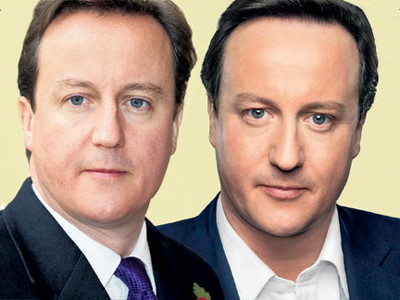A new voting method that votes by 'ranking' up to 5 people instead of just one candidate has started, what is the aim?

On June 22, 2021, local time, the mayoral primary election, which introduced a new voting system that allows up to 5 candidates to be 'ranked' and voted, started in New York City, USA. The American public radio network National Public Radio explains what this newly adopted ranking system is all about.
What Is Ranked-Choice Voting And Why Is New York Using It? : NPR
The new voting system adopted for New York's mayoral primary election is called ' Ranked-Choice Voting (RCV)'. RCV repeats steps 1-3 below to determine the winner of votes that voters select and 'rank' up to five candidates.
1. If there is a candidate who has been selected as the 'first choice' by the majority, that candidate will be elected.
2. If no candidate receives a majority of first selections, the candidate with the fewest number of first selections shall be eliminated.
3. Add votes to the 'second choice' of votes that had the unsuccessful candidate as the first choice.
The following is a simplified example to illustrate RCV. There are three candidates, Pochi, Tama, and Mugi, and five voters, A to E. Suppose voters A to E cast their votes by assigning the order of 1st choice, 2nd choice, and 3rd choice to each candidate as follows. In Round 1, only the number of votes for the 'first choice' is looked at, and if there is a candidate who has collected the majority, it ends at that point. If no candidate receives a majority, only the lowest ranked candidate is eliminated. In this case, Pochi has 2 votes, Tama has 2 votes, and Mugi has 1 vote, so no candidate has a majority. Therefore, the bottom barley will be eliminated.
| A. | B. | C. | D. | E. | result | |
| Pochi | 1 | 2 | 3 | 1 | 3 | 2 votes |
| Tama | 2 | 1 | 2 | 3 | 1 | 2 votes |
| Wheat | 3 | 3 | 1 | 2 | 2 | 1 vote |
In the following round 2, the candidates who were confirmed to be eliminated in the previous round are removed, and the remaining two candidates are calculated which of the top selections was the most. For this reason, ``1st choice: Mugi, 2nd choice: Tama, 3rd choice: Pochi,'' and the vote of C, who chose Mugi as the first choice, was ``1st choice: Tama, 2nd choice: Pochi.'' ” will be counted. After going through this process, in this example, the ball with the majority will win.
| A. | B. | C. | D. | E. | result | |
| Pochi | 1 | 2 | 2 | 1 | 2 | 2 votes |
| Tama | 2 | 1 | 1 | 2 | 1 | 3 votes |
The advantages and disadvantages of RCV summarized by National Public Radio are as follows.
◆Benefits
- Fewer dead votes
The conventional system of ``Winning the highest number of votes'' did not necessarily mean that the candidate with the majority of support would be elected, but the mechanism was that ``the candidate who received more votes than the other candidates'' would be elected. . For this reason, for example, even a candidate with 10% of the total votes was elected if the votes for other candidates were scattered. RCV is considered to have fewer dead votes because up to the fifth choice of voters can be reflected in the results.
・It becomes difficult for candidates whose likes and dislikes are clearly defined to be elected.
Candidates who have enthusiastic supporters but who also have overwhelming dislikes are less likely to be selected after the second selection in RCV, so the chances of winning are low.
・Cost-effective
In the conventional system, re-election would be required if there were no candidates who met the winning criteria. There is no need for a re-election as the RCV always ends after one vote.
・Decrease in negative campaigns
In the conventional system, one of the effective strategies was a negative campaign to ``reduce votes for the opposing candidate''. Negative campaigns are less important in RCV because it is important to 'get selected higher than other candidates'.
- Voters feel comfortable casting their votes
You don't have to cast your vote for the leading candidate to finish the election, so you can cast your vote for your favorite candidate.

◆ Disadvantages
・Voting procedures are complicated and prone to errors
Compared to the traditional “write the name of one candidate” system, RCV is said to be more complicated and more error prone for voters. In fact, based on results so far, RCV has reported a 3-5 times increase in invalid votes.
・There is an opinion that it is not democratic
It has been pointed out that it is not democratic because it excludes the idea of 'one person, one vote'.
・Many people cannot choose up to the 5th choice
According to exit polls for the New York City mayoral primary, 25% of voters made the fifth choice. If the election is not made until the 5th choice, there is a possibility that there will not be a candidate who will gather the majority, and there is also criticism that ``the true will of the people will not be reflected unless the 5th candidate is properly selected.''
・Possibility of “cooperation” between candidates
In the conventional election system, only one candidate name could be written on the ballot paper, so the strategy of cooperation between candidates was basically impossible. However, in RCV, two candidates can collude and have a strategy of ``If you want me to be first, make this person second.'' In fact, Democratic candidates Katherine Garcia and Andrew Yang adopted this strategy in the New York mayoral primary this time, and candidate Garcia said, 'You can vote for both Yang and Garcia.' 'People who support me, please support Garcia,' he said.
・There is room for doubt as to whether negative campaigns will actually decrease
Many of the negative campaigns are carried out by external groups unrelated to the candidate, and RCV cannot stop such negative campaigns.
RCV has been newly adopted in New York in response to voices that it is better than the method of `` voting for only one candidate '' that has been used so far. In the United States, two states, Maine and Alaska, have adopted RCV for state-wide elections and presidential elections, and some states have adopted RCV only for the 2020 presidential election. Other than the United States, Australia, New Zealand, Ireland, Scotland, and the Republic of Malta have adopted RCV.
Related Posts:
in Note, Posted by darkhorse_log







